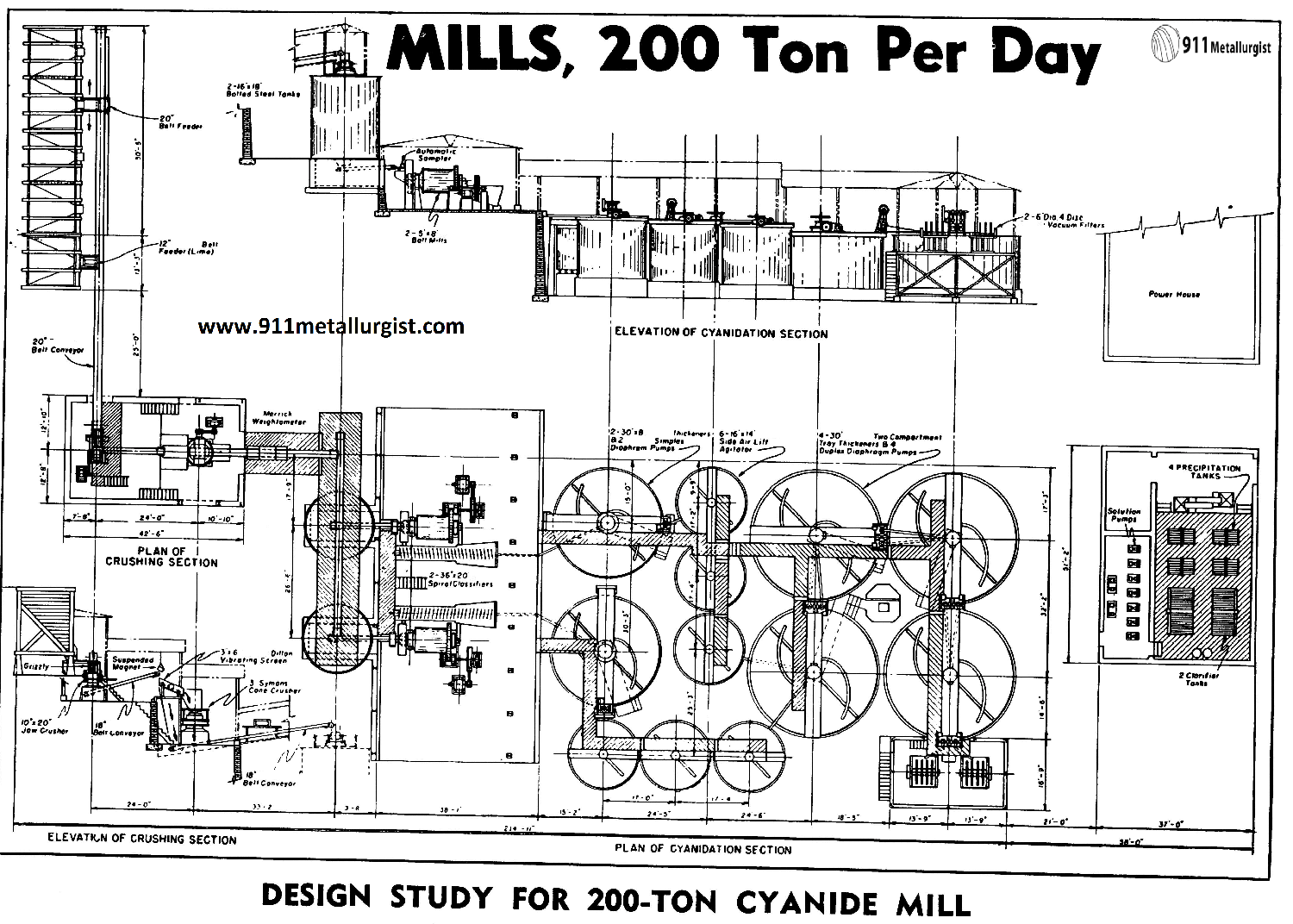Cyanide Destruction Methods and Processes

Detoxification processes are used to reduce the concentrations of toxic constituents in tailings streams and process solutions, either by dilution, removal, or conversion to a less toxic chemical form (sometimes referred to as“destruction” or “degradation” in the case of toxic cyanide species). The objective is to produce an effluent that meets limits or guidelines that have been set […]
Pachuca Tank

Pachuca tanks are used for a wide variety of leaching and mixing operations in the minerals industry. Previously, an equation was derived to predict the circulation in a Pachuca tank with full height draft tube risers. This analysis was subsequently verified with data from a large bore air-water flow loop used. However, the equation was based on the assumption that the solids settling velocity was […]
Gold Leaching

Gold Leaching Process Circuit NO. CY-1 This leach plant shows the continuous counter-current decantation system, in which all the ore is first reduced to a very fine state in the grinding mill-classifier circuit, in a Gold Leaching solution. The slime overflow of the classifier, usually 70%—200 mesh, or finer, is sent to the first thickener, known […]
Gold Cyanidation Process

The gold cyanidation process is the most important method ever developed for extracting gold from its ores. The reasons the widespread acceptance of cyanidation are economic as well as metallurgical. It usually obtains a higher recovery of gold than plate amalgamation and is easier to operate than the chlorine or bromine process. It produces the final product in […]
Cyanide Pre-Leach Conditioner

The notably successful application of flotation to many cyanide ores, and the development of a plant to treat the flotation concentrates by cyanidation, makes it possible for small plants to increase their recovery greatly and to make a much wider margin of profit. These concentrate treatment plants do not require large outlays of money and […]
Laboratory Cyanide Leach Plants

The (Batch) Laboratory Cyanide Plant was designed to assist the purchaser in determining what style of plant he needs for his particular ore. While an assayer’s test offers no particular difficulty, the ore may pack and prove impervious to solution when full size mill operation is attempted. To do away with this possibility a low […]
Leaching Plant Design

Leaching plants, faced with increased tonnage, coarse (up to —3/16″ solids) feed, longer retention time, erosion, corrosion and the high cost of space, must be compact, simple and highly efficient. The engineer faced with the obvious economy of using a few large agitators compared to many smaller units must also evaluate the design factors which will prevent the settling-out of solids, provide […]
Recovery of Copper in Cyanidation of Gold Ores
Small Gold Leaching Circuit Design

The gold cyanide leaching mill site is centrally located with respect to the mine, water supply and improved highway. This selection reduced both the length of the haulage road from mine to mill and main water supply line to a minimum. The location provided a sloping mill site, adequate tailings disposal area, housing space for […]
Gold Leaching Equipment, Circuits & Process Plants

In Leaching for Gold, there is often a tendency to overlook or minimize the importance of the small mine. The small mine of today may develop into the large mine of tomorrow. Under proper management and financing it has as good a chance of yielding a profit as the larger property. Unfortunately large capital is […]
